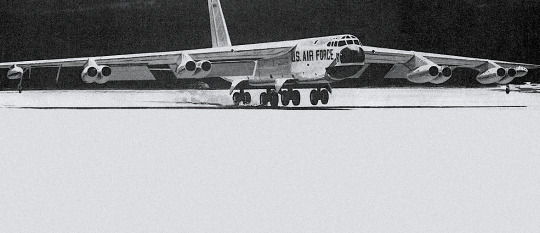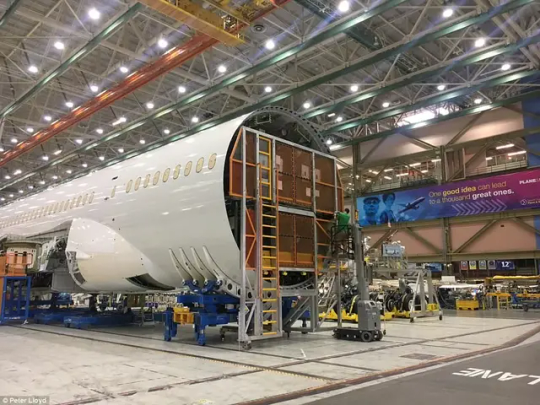#BOE Global
Explore tagged Tumblr posts
Text

The Boeing B-52 Stratofortress.
#vintage illustration#vintage airplane#vintage aircraft#b 52#b-52#boeing b-52 stratofortress#boeing b 52 stratofortress#military aircraft#military aviation#aviation#boeing#bombers#b-52 stratofortress#b 52 stratofortress#military bombers#cold war era#u.s. military#stratofortress#nuclear bombers#jet bombers#usaf#u.s. air force#air force#strategic air command#air force global strike command#afgsc#sac#barksdale afb#strategic bomber
96 notes
·
View notes
Text

A Global Supertanker dropping water before landing at Pinal Airpark, Arizona
28 notes
·
View notes
Text
Damn I'd really hate it if my lifelong goal was to be an astronaut and I did all the training and schooling and selection processing and I somehow get selected to go to space only for elon musk to hit the scene
#yep another one exploded#spacex#astronaut#elon musk#at this point were i an astronaut global tensions and Ukraine war be damned I'd be demanding to go up in a souyuz anyway it has to be safer#if it ain't spacex then it's boeing. ugh#yes it was unmanned mercifully but i would never agree to go up in a manned spacex ever#not that I'll ever have the money or health one way or another#pity the astronauts
6 notes
·
View notes
Text
Boeing Warns of Two Decades of Aircraft Supply Strains as Global Demand Surges
Boeing has publicly forecasted ongoing supply problems for commercial aircraft over the next 20 years, marking a shift in expectations for the global aviation sector. The company, ahead of the Paris Air Show, now predicts the world will need 43,600 new aircraft through 2044, a slight drop from its previous estimate of 43,975. This adjustment reflects persistent supply chain issues that have…

View On WordPress
#Accident#aircraft#alert#Analysis:#annual#Boeing#business#Celebration#Conference#controversial#decades#demand#Developing#Disaster#Education#Exclusive#feature#global#International#investigation#monthly#national#politics#positive#protest#regional#report#review#rural#strains
1 note
·
View note
Text
Here are Friday's biggest analyst calls: Nvidia, Apple, Netflix, Meta, Dell, Caterpillar, AMD, Coinbase, Boeing & more
Here are Friday’s biggest calls on Wall Street: Oppenheimer reiterates Coinbase as outperform Oppenheimer said investors should buy the dip in Coinbase following a series of negative reports a bout the company on Thursday. “COIN was down 7.2% on 5/15 after the close vs. up 0.4% for the S & P 500. It was a bad day for COIN, hit by both the cyberattack announcement and the opportunistic report…
#Advanced Micro Devices Inc#Apple Inc#Birkenstock Holding PLC#Boeing Co#Breaking News: Investing#Breaking News: Markets#business news#Carnival Corp#Caterpillar Inc#Coinbase Global Inc#Dell Technologies Inc#Investment strategy#Markets#Martin Marietta Materials Inc#Meta Platforms Inc#Netflix Inc#NVIDIA Corp#Pentair PLC#Robinhood Markets Inc#Vulcan Materials Co
0 notes
Text
अमेरिका-चीन टैरिफ वॉर में भारत की जीत! एयर इंडिया को बोइंग डील से बड़ा फायदा
Highlights:अमेरिका और चीन के बीच टैरिफ वॉर ने भारत को दिया सुनहरा मौकाएयर इंडिया को जून तक 9 बोइंग 737 विमा�� मिलना तयचीन के लिए बने विमान अब भारत की झोली मेंएयर इंडिया की रणनीति से एविएशन सेक्टर में भारत की पकड़ मजबूत2023 में ऑर्डर किए गए 140 नैरोबॉडी विमानों की डिलीवरी 2026 से अमेरिका-चीन टैरिफ वॉर में भारत को बड़ा फायदा, एयर इंडिया को मिलेंगे चीन के लिए तैयार बोइंग विमानअमेरिका और चीन के बीच…
0 notes
Text
Boeing appoints Stacie Sire new chief for India engineering centre
By A Correspondent Bengaluru (Karnataka): American aerospace and defence giant Boeing Co. has named Stacie Sire the new chief engineer for India and the head of its engineering and technology centre here. Now based in the city, Sire has taken over strategy and operations for Boeing India Engineering & Technology Center (BIETC). She will be responsible for advancing the institution’s goals and…
#A&D#Aerospace#Aerospace & Defence#Aerospace & Defense#Aerospace and Defence#Aerospace and Defense#Aerospace Technology#Ahmed Elsherbini#BIETC#Boeing#Boeing Co.#Boeing Company#Boeing Global Engineering#Boeing India#Boeing India Engineering and Technology Center#Engineering#Stacie Sire#Technology
0 notes
Text
Tech Stocks Tumble as Tariffs and Inflation Rattle Markets
Wall Street had a rough end to the week as stocks took a steep dive on Friday, with big tech companies leading the selloff. The Dow Jones Industrial Average fell 715 points (-1.69%), the S&P 500 dropped 112 points (-1.97%), and the Nasdaq Composite plunged 481 points (-2.70%). Investors reacted negatively to fresh economic data showing weak consumer spending, rising inflation expectations, and…
#23andme#ai#ai trade#alibaba#asia#automobile#aviation#bankruptcy#boeing#breaking news#canada#chatgpt#china#correction#dot com bubble burst#economic confidence#economics#economy#euro#europe#finance#forex#gaza#germany#global#government#housing#international#invest#israel
0 notes
Text
Global Trade and Retail Trends: Insights from Recent Events
Business News Edition: The Winds of Change in Global Trade and Retail The latest episode of our podcast takes listeners on a journey through the complex and evolving landscape of global supply chains. We delve into how the retail industry’s growing emphasis on health and sustainability is transforming supply chain dynamics. As consumer preferences shift towards organic, natural, and minimally…

View On WordPress
#Boeing Strike#Cocoa Prices#Consumer Preferences#Dairy Industry#Elon Musk#Global Trade#Grocery Wars#Organic Foods#Reshoring#Retail Trends#Sunday Trading Laws#Supply Chains#Sustainability#Tariffs#Tesla Stock#U.S. Trade Policies
0 notes
Text



,never again will I do anything kind for a nigger or go out of my way to help. Today a right proper inbred cocaine smoking nigger customer of my Aunt Pat Trujillo decided my hands where too dirty to pick up his dropped air freshener made of whale fat off the floor. Then he was a hateful rude stupid inbred idiot nigger for thirty minutes.
The director of the shelter is black, the kind I can tolerate. She's the kind my mother would kill and cannibalise. You know, bitch wears an Ankh. We're the same species of Baxtienne. Homosapien vr. Semiticus Sentia.
There's a staff at shelter with a direct K.U. link to the plastic industries of Oregon and Washington. Semiticus Demonico.
My bid...
Is to massacre the shelter for being human and/or close to it. I'd rather change my name and move to California. You know have a moreso segregated life even if it's in prison. At least in California you can and may open your mouth and speak your mind. You can and may rebuild a home simply because a nigger touched it. You can and may segregate yourself from communities of Alien Races.
No. I don't want IBM.
I never want to see a computer or electrical outlet again. Well, I do like music. I could use a hand crank RCA mp3 player. I don't like their consumer basis. IBM. I'd rather stick to gunpowder or go back on disability.
I'd rather massacre Wichita Kansas and steal a Classified Darkbomber with Antigravity. I would rather fly at night in a highjacked UFO made by humans. I'd rather fly by way of Mars to Holy Russia.
That's right nigger.
Here we are HOLY RUSSIA.
Let me explain.
Tokyo is hosting the United Nations.
We are the Communist Party of America. This is Wichita Kansas, USSR. We have killed the families of your senators and governors. We have homosexually raped and murdered a former president. We put a stick of dynamite in the anus of a politicians 2 year old grand daughter.
This is why faggots, niggers, and English Speakers ain't allowed to play in my yard or visit me no more. It's because they're all worthless humanoid trash.
Here we are Russia....
But I would rather fly to Moscow in a stolen antigravity bomber equipped with Dark Matter Bombs.
I'd rather give it to my new lover...
He's a Premier. I am said to be already the dirty little secret of Timur Ivanof. Let me explain. I am a terrorist. I have a nuclear hydrogen device. Timur Ivanof is my wife now. It's because I like the sex. I bought my nuke from Kim Wu Jong.
Thou now bow to Mao.
Should you not speak Japanese we will bomb Topeka.
Yuko Hasegawa, my first wife...
She's your queen. Kiss her rump or you DIE. I'm kidnapped. I'm in Kansas.
Welcome to the People's Liberation Movement. Here being an elected politician or government accountant will only get you sodomized, butchered, cannibalised and processed into plastic. Processed into air fresheners used only by NIGGER TROLLS.
Did I tell you I hate America?
Did I tell you I hate Niggers?
Welcome to the Genocide of America Niggerdom and the liberation of China from Corporate American Slavery.
Yuko...
You no slave. You no cook me eggs. We just married since I was 12 years old. I want my divorce. You want yours.
But could you do a favor?
Slap these niggers in the USA.
Slap their fat stupid worthless asses.
Let's meet in San Francisco.
Let's escape this prison called the USA.
Let's move to the Broken Mountains of Central China.
Let's be slaves in the Forbidden City and continue to kill America.
I have video of a shelter staff buttfucking his frat brother in the 1980s or 1990s. Let's extort him or maybe sell him a copy of the video. I need a few things.
I only have nuclear hydrogen.
I only have gunpowder.
I only have coupons.
The Brazilian Military keeps eying me. Those niggers all have HIV & Chlamydia. This is why I don't hang out with blacks...
DISEASE.
J.
#love#Russia#korea#Moscow#kansas#bullshit#global politics#Kansas#Wichita#Boeing#top secret planes#gay
0 notes
Text
interesting links roundup #10
>>> permalink <<<
reading
Animals as chemical factories
Are "algorithms" making us boring?
Big Food Gets Jacked
Can the Human Body Endure a Voyage to Mars?
Century-Scale Storage
Crypto trader kills himself on X live to create a meme coin
A Dark History of the World’s Smallest Island Nation
The End of Children
The Getty Family’s Trust Issues
The hardest working font in Manhattan
How Diablo hackers uncovered a speedrun scandal
I Tasted Honda's Spicy Rodent-Repelling Tape (And I will do it again unless someone stops me.)
If You Ever Stacked Cups In Gym Class, Blame My Dad
The Kiss That Changed Video Games
Patterns in confusing explanations
Photographers Are on a Mission to Fix Wikipedia's Famously Bad Celebrity Portraits
The Real-Life Consequences of Silicon Valley’s AI Obsession
Removing Jeff Bezos From My Bed
‘Technofossils’: how humanity’s eternal testament will be plastic bags, cheap clothes and chicken bones
The “Unhinged Bisexual Woman” Novel
Unique formation of organic glass from a human brain in the Vesuvius eruption of 79 CE
What a Crab Sees Before It Gets Eaten by a Cuttlefish
When Your Last Name Is Null, Nothing Works
Who Killed the Footless Goose?
The Worst 7 Years in Boeing’s History—and the Man Who Won’t Stop Fighting for Answers
tools/reference
Ableton: Learning Synths
Cover Your Tracks: See how trackers view your browser
European word translator
OneLook
Refuge Restrooms
River Runner Global
other
BLUEJEWELED
jacksonpollock.org
London Transport 25: ride 25 different forms on transport in one day
What if Eye...? [warning for some flashing graphics/gifs]
10,000-Year Earworm to Discourage Settlement Near Nuclear Waste Repositories
287 notes
·
View notes
Text
Global Strike on March 2nd

shutitdown4palestine has called for a global strike on 2nd March
What to do for 2nd March
Walk out from work and/or school
Picket Israeli embassies and consulates
Picket against companies that profit from Israel’s occupation of Palestine (Lockheed Martin, Boeing, Raytheon, Northrop Grumman, General Dynamics, Elbit Systems)
Host speak outs
Wear kuffiyehs
Wear black armbands
The website linked has further information about this strike as well as protests that may be occurring in your area.
Aside from this, as usual, boycott, call your reps, and donate when you can.
#palestine#free palestine#ceasefire now#ceasefire#free gaza#gaza#rafah#all eyes on rafah#i only just heard about this from twitter and i didnt see any posts about it here yet so i thought to share#i know its last minute at the very least i can get the word out now#march 2nd#global strike#march 2#please reblog if you can to spread the word
882 notes
·
View notes
Text
Deadly Air India Jet Crash Sparks Sell-off in Boeing Stock
June 12 – Boeing (NYSE:BA) shares dropped about 8% in early U.S. trading Thursday following the crash of an Air India flight shortly after departure from Ahmedabad. The aircraft, identified as a Boeing 787-8 Dreamliner, was en route to London Gatwick with 242 passengers and crew on board, according to aviation tracking data. The plane went down approximately nine minutes after takeoff. Local…
#Accident#Air#alert#annual#Awards#Boeing#Celebration#Conference#crash#critical#deadly#Disaster#Economy#Education#entertainment#Exclusive#global#India#jet#Latest#monthly#Opinion#regional#review#rural#scandal#Science#selloff#sparks#Sports
0 notes
Note
Have you heard about the global day of action on March 2?
Yes! I have! Here's more info about it (click). Here, from the "About" section:
There is a growing global movement for a Free Palestine. Across the world, millions of people are engaging in demonstrations and organizing major marches in solidarity with Palestine. Our demands for an immediate ceasefire, cutting all aid to Israel, and lifting the siege on Gaza have broader support than ever. On November 4th, over 500,000 gathered in Washington DC for the largest march in recent times to stand in solidarity with Palestine. Protests with half a million people erupted on the streets of London, constituents across Canada occupied over 17 MP offices from coast to coast, and Belgian dock workers' unions have refused to transport weapons by plane or sea that are destined for Israel. We must keep building momentum and increase the pressure with more marches, walk-outs, sit-ins, and other forms of direct action directed at the political offices, businesses, and workplaces that fund, invest, and collaborate with Israeli genocide and occupation. NOW is the time for our mobilizations to grow in size, frequency, and focus; building a political climate that makes Israel’s business of genocide unsustainable.
Already protesters have shut down highways, train stations, and bridges in the United States; activists have targeted Israeli weapons manufacturers; Belgian dockworkers’ unions have refused to handle weapons transports to Israel; Bolivia has cut diplomatic ties with Israel while Jordan, Chile, and Colombia have recalled their Israeli ambassadors. Be part of the change, take action, and make your voice heard as the global struggle for Palestine enters a new phase.
Join the Shutdown for Palestine on Friday, December 8, 2023. We call on movements, organized labor, youth, students, media and healthcare workers, and all members of society to join us in demanding an immediate ceasefire, cutting all aid to Israel, and lifting the siege on Gaza. This call to action started on November 9, but we will continue to build up the momentum with ongoing days of action. No business as usual until Palestine is Free!
Walk out from work and/or school
Picket Israeli embassies and consulates
Picket against companies that profit from Israel’s occupation of Palestine (Lockheed Martin, Boeing, Raytheon, Northrop Grumman, General Dynamics, Elbit Systems)
Host speak outs
Wear kuffiyehs
Wear black armbands
859 notes
·
View notes
Text
Have you ever thought about how weird it is that you can buy pineapples at the grocery store? Someone pulled this shit off a tree tens of thousands of kilometers away, and then sent it to me. If I don't buy it, they'll just throw it in the trash.
Global trade is a really remarkable invention of our species. My neighbour's Hyundai was born in South Korea, shipped here on a boat, and will never see its mother or most of its siblings again. Even so, it was only slightly more expensive than a locally-made Ford. Sorry, did I say "locally-made?" That was also made in a different country and shipped here under duress. We don't even notice such a miracle unless we check the registration.
My Volare was sent here from The America, a country which has been going through some rough times lately. I figured that maybe it would want to go back and see Missouri, its land of creation, at least once. That Hyundai would never get the opportunity: who would bundle an Elantra into a steamer ship? Driving there, though, was basically feasible. Well, feasible for anyone who wasn't operating a badly-maintained, 47-year-old example of one of Mopar's shittiest cars.
You guessed it: I broke down at the end of my block. There is good news, though. A couple months ago, I found a bicycle clogging the sewage drain near my office, and I was able to bang it mostly straight with a hammer. Ever since then, I've been throwing it in the trunk, and using it to ride home whenever one of my cars leave me stranded. It's been great for my cardio, but more importantly, it was built here. Plans changed. Volare out, whatever this bicycle is "in." I rode it to the bike shop that assembled it, stopping periodically to ingest fried food, craft beer, and ice cream so as not to unnecessarily improve my health from over-exercise.
Unfortunately for everyone, when I got to the bike store, the snooty repair-shop crew considered my quest incomplete. They didn't make the bikes there, just threw them together. The frame and wheels had come from China, they explained, a big integrated factory that punches out the parts, spitting out thousands of proto-bikes per second without any form of human involvement. You'd have to get on a plane and take it to go visit the mothership in Guangdong.
Confronted with the choice to either abandon my quest or willingly board a Boeing product, I decided to take the safer route and return home. Perhaps it was foolish to try and figure out the maternal bonds of soulless, inanimate methods of transportation. Or perhaps I just picked the wrong kind of product, I decided, picking up an apple at the grocery store on my way home. Surely, this thing came from here, I thought right before I read the label.
As soon as I figure out where "Northern Spy" is, you'll be the first to know.
145 notes
·
View notes
Text
They’ve built a “Great Wheel” on the Seattle waterfront [...].
The small timber village became a military outpost in the Puget Sound War [...], [and] soon evolved into a trade gateway, with timber tailings and other industrial trash from Henry Yesler’s mill used to fill in the marshlands [...], atop which migrant laborers raised tents and shanties [...] now working to feed raw materials into the furnaces of the Second Industrial Revolution burning in the East. [...] The first nationwide strike ripped across the country’s railways in 1877 [...]. Meanwhile, young financial conglomerates rose after the city-devastating fire of 1889, linked openly to local government [...] in the kind of symbiotic public-private relationship that would become a hallmark of the Gilded Age. [...] [L]ocal elites rebuilt [...] downtown [...] from scratch, hosting the tallest building on the West Coast alongside other new constructs [fueled] with money gleaned from the supply chains linking eastern capital to Alaskan gold. [...]
Over the next century, Seattle would see new sequences of boom, bust, and reinvention. Military investment in the region during the First World War secured the city’s ship-building industry and expanded Boeing from a small lakeside hangar into a massive war contractor. [...] Across Washington state, capital had first poured into the “Third Industrial Revolution,” founded on electricity, chemicals, and massive hydropower projects [in the 1930s] [...], then into the “Fourth” wave of petrochemicals, nuclear, and, in the case of Seattle especially, aircraft and missile technology. Each was followed by periods of dramatic decline [...] paired with rapid financialization and, finally, re-orientation around the new industrial cluster [...]. Today the city - again rebuilt [...] - is seen as one of the primary beneficiaries of the “Fifth” Industrial Revolution in information technology, outshone only by California’s Silicon Valley. [...] The digital was increasingly thought of as somehow "immaterial," sustained by intellectual labor more than physical toil [...].
Silicon Valley myths of [...] "immaterial" labor disguise a more gruesome dynamic in which growing segments of the global labor force are being deprived even of the basic brutality of the wage, instead forced out into growing rings of slums, prisons, and global wastelands. [...]
---
Perched alongside a downtown business corridor [...], Seattle's Great Wheel seems to peer out over [...] [the] prophesied “cooperative commons,” an infotech metropolis abutting the beauty of an evergreen arcadia. But travel below Seattle’s cluster of infotech industries and the image appears much the same as that of a hundred years prior - a trade gateway, squeezing value from supply chains by selling transport and logistical support. The southern stretch of the metropolis bears little resemblance to the revitalized urban core of the city proper. Instead of the “cognitive labor” of Microsoft, it is defined instead by the cold calculation of companies like UPS, founded in Seattle when the city was one link in a colonial supply chain built first for timber, then Alaskan gold, then World War. [...]
In south Seattle, this logistics empire takes the form of faceless warehouses, food processing facilities, container trucks, rail yards, and industrial parks concentrated between two seaports, an international airport, three major interstates, and railroads traveling in all directions. Meanwhile, the poor have been priced out of the old inner city, moving southward [...]. [T]hey can be found staffing the airport and the rail yards, hauling cargo in and out of two the major seaports, loading boxes in warehouses [...]. And, beyond them, the shadow stretches out to Washington’s rural hinterlands where migrant laborers staff a new boom in agriculture and raw materials [...] - and further still into America’s long-depressed interior, where the Great Wheel meets its opposite: Memphis, the FedEx logistics city, watched over by a great black pyramid [the infamous Bass Pro Shop pyramid]. [...]
Every Seattle is capable of creating an eco-friendly, “cooperative commonwealth” tended by apps and algorithms only insofar as there is a Memphis that can provide human workers to sort the packages, a Shanghai to build the containers that carry them, and a Shenzhen to solder together the circuits of the machines that govern it all.
---
All text above by: Phil A. Neel. "The Great Wheel". Brooklyn Rail. April 2015. Published online at: brooklynrail.org/2015/04/field-notes/the-great-wheel. [Bold emphasis and some paragraph breaks/contractions added by me. Text within brackets added by me for clarity. Presented here for commentary, teaching, personal use, criticism purposes.]
#ecology#multispecies#abolition#imperial#colonial#edwardian#temporality#hinterlands#tidalectics#archipelagic thinking#intimacies of four continents#caribbean#carceral geography
155 notes
·
View notes